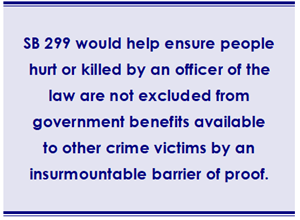You can also view this newsletter as a PDF.

Research Shows California Revenues Strong,
Slow Growth in Net Outmigration
In recent years, and increasingly during the COVID-19 public health emergency, speculation has grown about Californians fleeing the state in droves. As chair of the California Franchise Tax Board (FTB), Controller Yee called on the agency to look into this and the impact such activity may have on California’s tax base.
In May 2021, the FTB Economic and Statistical Research Bureau released its ensuing report, “The Impact of Migration on California Income Tax Revenues,” which found that any drop in personal income tax (PIT) revenues that could be attributed to recent outmigration has been substantially offset by taxes paid by California’s newest residents.
In fact, California’s total PIT revenues have continued to grow year-over-year. FY 2019-20 PIT receipts only appeared to take a slight dip because the filing deadline was extended into FY 2020-21 due to COVID-19. While FY 2019-20 PIT receipts totaled $82.92 billion (behind $92.29 billion in FY 2017-18 and $98.31 billion in FY 2018-19), California has brought in $127.01 billion in PIT receipts with one month left to report in FY 2020-21 – even after deducting the first round of Golden State Stimulus payments and expanded tax credits for low- to middle-income Californians.
A March 2021 report by the nonpartisan California Policy Lab also looked at anecdotal talk of mass migration from California during the COVID-19 pandemic, using quarterly credit and residency data to evaluate the reality of the situation.
Those researchers found no marked increase in the share of California residents moving out of state from the first shutdowns in March 2020 through the end of the year. About 18 percent of Californians who moved during 2020 left the state, a figure that has gradually increased from 16 percent in 2015.
However, while the number of people entering and leaving California usually balances out, over the period studied, nearly twice as many moved out as moved in (267,000 left; 128,000 entered). In recent decades, California had seen a pattern of net domestic outmigration and net international in-migration. Since 2018, restrictions on international immigration have altered this pattern.
At the county level, San Francisco experienced what researchers described as a “unique and dramatic exodus,” with six-and-a-half times as many people leaving as did during the same period of 2019 (from 5,200 in 2019 to 38,800 in 2020).
Still, 80 percent of those who left San Francisco stayed in California, while two-thirds stayed within the 11-county Bay Area economic region. Counties in the Sierra Nevada are such a popular destination for those leaving the Bay Area that some experienced 50- to 100-percent increases in Bay Area in-migration.
 California has many qualities desirable to individuals and businesses including incomparable natural resources and a diverse, talented professional workforce. The nonpartisan Legislative Analyst’s Office (LAO) identified the high cost of housing in California as the main factor that drives some to move elsewhere. At the same time, LAO reported more people with graduate degrees and incomes of $110,000 or more move into California than move out, indicating the state still is a draw for those who can afford it.
California has many qualities desirable to individuals and businesses including incomparable natural resources and a diverse, talented professional workforce. The nonpartisan Legislative Analyst’s Office (LAO) identified the high cost of housing in California as the main factor that drives some to move elsewhere. At the same time, LAO reported more people with graduate degrees and incomes of $110,000 or more move into California than move out, indicating the state still is a draw for those who can afford it.
The FTB report commissioned by Controller Yee found that California’s outmigration patterns have mirrored the cost of housing relative to the national average. The California Association of REALTORS reported the median sales price of a home in the state was $818,260 in May 2021, up 39 percent from a year prior. Meanwhile, the National Association of REALTORS reported the U.S. median sales price was $341,600 in April 2020, more than 58 percent less than in California.
Controller Yee has been a strong advocate for streamlining California’s housing finance authorities, to spur development of affordable housing, address historic supply lows, and help rein in skyrocketing costs. Yee continues to push for reforms that will help Californians live affordably in the state’s key job centers, with reasonable commutes and access to quality educational opportunity for themselves and their children.
FTB researchers note it is more difficult to track the movement of businesses from California than individuals through tax data. A business may stop filing because they closed down, merged, or moved out of state. Further, they could move some but not all operations elsewhere. In any event, they would continue to pay California tax on their income based on the percentage of their sales that were made in California. The report posits that it is possible for a company to save costs through a full or partial move and, therefore, pay more California tax based on their higher income.
The real proof is in the numbers: Despite anecdotal accounts of exodus, California corporation tax receipts grew from $10.11 billion in FY 2016-17, to $12.49 billion in FY 2017-18, to $13.79 billion in FY 2018-19. As with PIT, corporation tax receipts dipped to $9.82 billion during the pandemic shutdown, but they have soared to $20.48 billion with one month left to report in FY 2020-21.
The consensus of the research is that the number of individuals leaving California has steadily and modestly increased in recent years, made more pronounced by restrictions on international immigration. Yet California revenues remain strong, and the state remains a destination of choice for those with the means to afford it. The challenge for California leaders remains reining in the cost of housing, so the people at the heart of California’s success can share equitably in the “California dream.”
Yee Pushes for Equal Access to
State Benefits for Crime Victims
Earlier this month, the California State Senate advanced a measure by Senator Connie Leyva to help ensure innocent people injured or killed at the hand of law enforcement have access to the same government resources made available to other victims of violent crime in California. Senate Bill 299, co-sponsored by Controller Yee, passed the State Senate by a vote of 32-6.
The California Victim Compensation Board (CalVCB), of which Controller Yee is a member, administers the state’s Victim Compensation Program. Victim compensation is an important pathway for survivors to access support, providing reimbursement for costs such as physical and mental health care, funeral expenses, relocation, and home and vehicle disability modifications when a survivor has no other means to cover these costs. There are limits on how much can be paid out, and expenses must result directly from the crime.
 However, inequities exist in the current system, where some crimes are recognized as compensable under the law, and others are not. For example, eligibility restrictions in place today lock victims of police violence and their families out of assistance.
However, inequities exist in the current system, where some crimes are recognized as compensable under the law, and others are not. For example, eligibility restrictions in place today lock victims of police violence and their families out of assistance.
Existing law requires CalVCB to verify that a crime occurred based on a police report, and survivors may be denied for reported noncooperation with police, giving significant weight to the opinion of law enforcement. Yet data collected by the U.S. Department of Justice in 2019 found that nearly six out of 10 violent victimizations never are reported to law enforcement.
In 2019 Controller Yee sponsored legislation (AB 629, Chapter 575, Statutes of 2019) to extend victim compensation benefits to victims of human trafficking. Thanks to these efforts, CalVCB has more flexibility in the evidence it can use to establish that a crime occurred for victims of sexual assault, domestic violence, and human trafficking. SB 299 seeks to extend this same flexibility in consideration of claims from survivors of police aggression and loved ones of those killed, as a police report documenting the victimization is often elusive, and officers are rarely charged.
SB 299 would remove unjust barriers to compensation. The measure would:
- Recognize those who are seriously injured or killed by police as crime victims eligible for compensation, regardless of whether the officer is arrested or charged.
- Allow survivors of police use of force to use documentation other than a police report to verify eligibility and bar denial based solely on the contents of a police report in cases alleging police violence.
- Make sure that no survivor is denied victim compensation benefits based on a decision about whether or not to speak with law enforcement, and that family members of homicide victims are not denied coverage for these reasons.
- Clarify that CalVCB decisions regarding compensation eligibility are not admissible in any other civil or criminal proceeding, or, for cases of police use of force, in related employment proceedings.
In cases involving police use of force, SB 299 would bar exclusion from CalVCB benefits based on an applicant’s actions allegedly leading to the injury, unless the person was committing a crime at the time that caused serious injury or death to another. Applicants would remain ineligible to receive victim compensation while in jail or prison, or while on probation or parole for a serious offense, pursuant to existing law.
In California, victims of violent crime are afforded support to offset the crime-related expenses they incur. SB 299 would help ensure those who are hurt or killed by an officer of the law are not excluded from these available government benefits by an insurmountable barrier of proof.
SB 299 next will be heard in Assembly Public Safety Committee on June 29. The measure is co-sponsored by Californians for Safety and Justice, Crime Survivors for Safety and Justice, Prosecutors Alliance of California, San Francisco District Attorney Chesa Boudin, and Youth ALIVE!